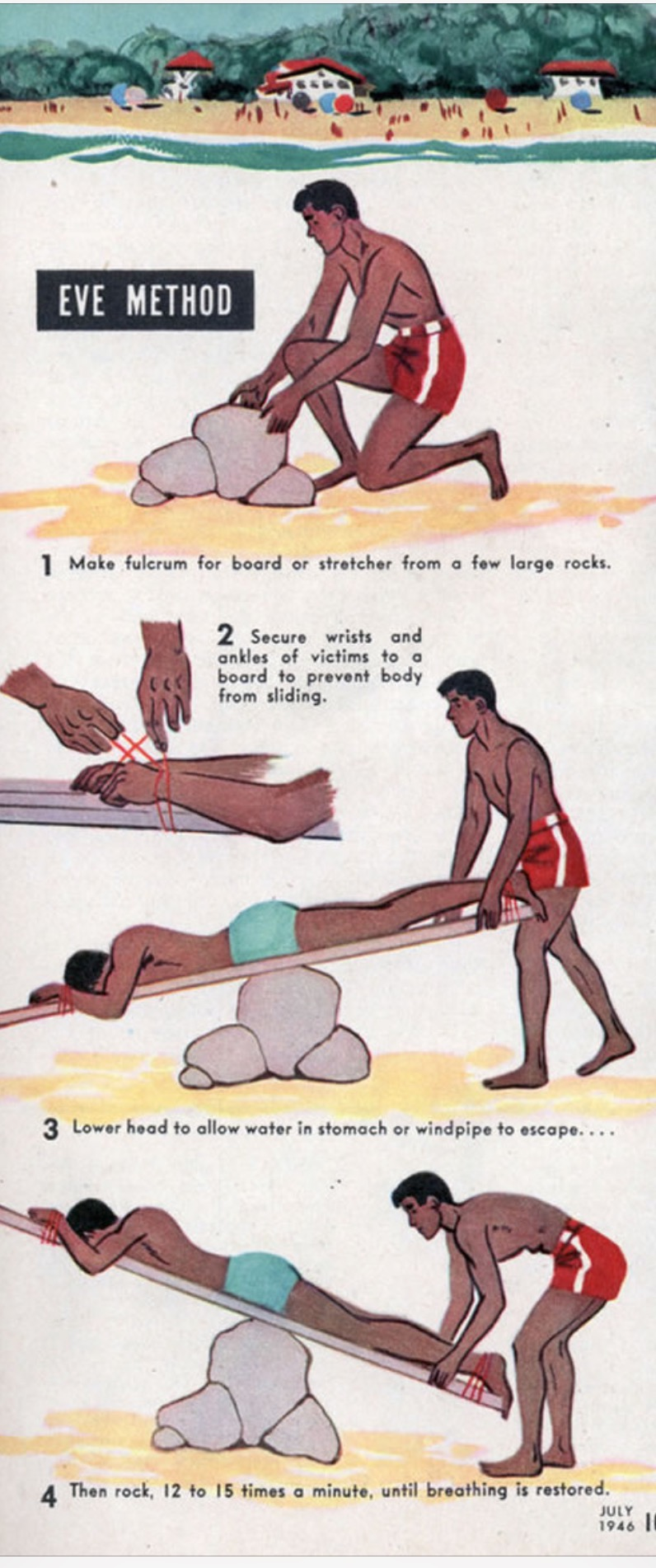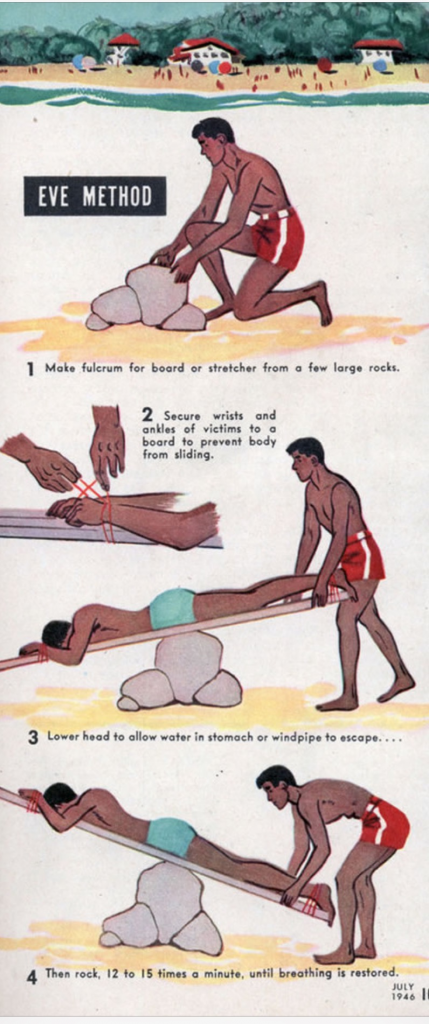
Story of CPR: the contribution of Dr. Eve's Method of Artificial Resuscitation
In 1932 Dr Frank Eve developed a new style of resuscitation method which focused upon the diaphragm movement – rather than the commonly understood “bellows” system of the lungs.
Dr Frank Eve experimented on himself and his son (18 years of age at that time), and showed that his trestle method moved the diaphragm by about 5cm and sucked in up to 1800cc of air, i.e. far more than the other systems used in that time ( The Schafer Method ). Incredibly Dr Eves method was one of those used throughout the 2nd world war and was popular with the Royal Navy and the emergency services until the development and adoption of the now common place – “mouth to mouth”.
Dr. Eve method was an essential piece in the world’s resuscitation story. The method consists into positioning the patient on a rolling barrel in order to promote diaphragm movements, pushing air in and out the chest (as it’s shown in the video).
Dave Halliwell is an educator and researcher into resuscitation and paramedic education techniques. He will be sharing his insight into resuscitation at Dubai Ambulance pre hospital care conference and Spark of Life congress ( Adelaide).
He explained the main action of the Eve’s Rocking Method:
- Subject is placed on a stretcher or wooden board in prone position
- Start rocking movements 45 degrees up & down
- Down (footend) = expiration
- Up = inspiration
- Increase of venous return
To examine deeper the case of Dr. Eve’s Method of artificial resuscitation, visit the ERC section.



